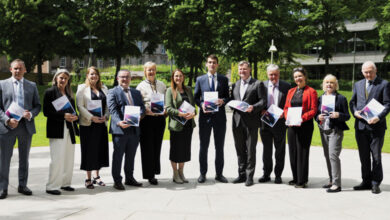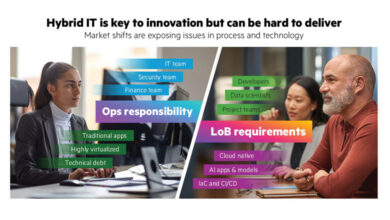Building Ireland’s digital health future

Fran Thompson, Chief Information Officer of the Health Service Executive (HSE), outlines the scale, complexity, and critical importance of delivering a digitally integrated health system.
Thompson outlines the HSE’s vision for delivering a “digital-first health system”. He explains that progress must be driven by six core pillars: governance, workforce, clinical and business transformation, cybersecurity, digital foundations, and data.
“These six pillars are not just technology projects; they are fundamental shifts in how we deliver healthcare. If we get these right, we can deliver better care, improve access, and strengthen patient outcomes across the country,” Thompson says.
1. Empowered patient
“At the centre of the healthcare today for you is the institution or the organisation that you are being treated in,” Thompson says, underscoring the fragmented nature of current records. He highlights the ambition to shift this dynamic: “We need to put the patient at the centre.”
Thompson spoke passionately about the Shared Care Record, a view that brings together GP, hospital, and clinic data. “When you go to your GP, they have access to the shared care record – know what happened to your hospital, and vice versa. The shared care record is available to the citizen.” This will allow patients to have a unified view of their records and clinicians to access a comprehensive picture of care.
2. Digitised workforce and workplace
“Our people do not have the tools they need today,” Thompson explains, highlighting the challenge of modernising digital tools at scale. He describes the HSE’s strategy to invest heavily in frontline staff: “70 per cent of those resources are going to the frontline for some of these programmes.”
He emphasises the need for clinicians and support staff to have access to “really good productivity tools”, essential for both delivering and accepting digital change. “Digitisation is as much about enabling staff as about deploying systems.”
“If we have a digitally literate, skilled workforce, we can harness the data and have one single EHR for the totality of the country.”
Fran Thompson, Chief Information Officer, HSE
3. Digitally enabled and connected care
Thompson describes the Electronic Healthcare Record (EHR) as the system of record for clinicians and the Shared Care Record as an “aggregated view”.
“Our Shared Care Record is bringing together all of the data from the multiple systems into one view for clinicians.”
He acknowledges the scale of the challenge: “We have about 2,700 odd individual solutions and systems.”
True integration requires workflows that move data “very, very speedily from hospitals to community care and diagnostics in real time, or as close to real time as there is”.
4. Digital health ecosystem
Thompson stresses the importance of innovation and building an ecosystem beyond large vendors. “They are brilliant at lots of stuff. They are not always great at innovation at the edges,” he says. That is why the HSE is working to “support Irish companies to deliver a really good ecosystem and to allow and support innovation”.
This approach, he explains, is about adapting solutions that exist elsewhere and integrating them locally: “We need to utilise the solutions we have to innovate at the edges.”
5. Secure foundations
Cybersecurity and reliable infrastructure form the backbone of the transformation. “We know the cost of that is eye-watering,” Thompson admits, referring to the extensive financial commitment required for Wi-Fi and other critical infrastructure.
On cybersecurity, he says: “Every day is a cyber challenge for us, given the size and scale and what goes on.” According to Thompson, resilience, staff training, and a “security-first culture” are essential to underpin digital health efforts.
6. Data-driven services
“Data made a difference during Covid,” Thompson says, explaining how improved analytics underpinned vaccination and patient tracking. The HSE has since appointed a Chief Data and Analytics Officer to build on this momentum.
Giving a practical example, Thompson says: “When we were launching an app on 25 February 2025, we discovered maternity clinics could name their services however they wanted, so we had to standardise that data.”
In this context, he believes that standardisation is vital: “We need to bring that across all of our outpatients. Clean, consistent data will feed real-time analytics, dashboards, and decision-making tools.”
A digitally literate workforce
Thompson concludes with a firm reminder of the path forward: “You cannot do everything in one hour, it is a multi-year programme.” He emphasises pragmatism and sequencing starting with shared records, maternity and lab systems, single HR and finance platforms, virtual wards, and more.
“This is the biggest change programme the organisation will ever have, enabled by technology, making sure patients’ voices are heard and understood. If we have a digitally literate, skilled workforce, we can harness the data and have one single EHR for the totality of the country.”





